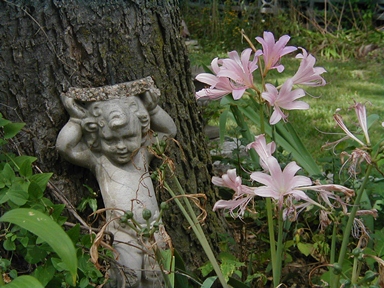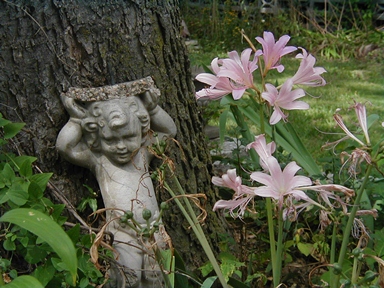In August, it is sometimes hard to find plants that are still alive and thriving after the July heat and dry spell. However, we are starting to move into shorter days and by the middle of the month, the weather should start to cool down. This leads us into fall with beautifully colored plants. One of my favorite plants that blooms from August into September is the Surprise Lily.

Other lilies with similar features are available, but they seem to be better suited for more southern climate zones.
The Surprise Lily is easy to grow. This plant does well in part shade and average moisture, but will tolerate full sun and dry conditions. It grows from a bulb, and since the leaves go dormant in June, you should mark the location of the bulbs to avoid damaging them. The seeds in Surprise Lily do not produce new plants. More plants grow from the many new bulbs on the main bulb. You can easily dig up and divide the bulbs at least every five years, in the late fall, after the flowers have finished blooming. When planting a Surprise Lily, place the bulb 4-6 inches deep for best growth; no additional fertilizer is necessary. They do not seem to have many pest problems, according to the University of Arkansas Extension Service. Because Surprise Lily leaves are dormant by June and the flowers appear on a long bare stalk, it is best to plant this in a landscape bed with other plants to fill in the bare space during the summer and while they bloom.
In the late 1800s, a doctor transported the Surprise Lily from Japan to the U.S. He was looking for plants that might help those with ophthalmological needs. The Surprise Lily belongs to the same botanical family as the amaryllis. As you can see from the photo (by Soni Cochran, UNL Extension) the flowers of the two plants are very similar.
Surprise Lilies go by many other names including Naked Lady, Spider Lily, Hurricane Lily, Magic Lily, Pink Flamingo Flowers, and Resurrection Lily. No matter what you call it, the Surprise Lily is a fun addition to any garden or landscape. On an acreage, Surprise Lily gives an extra boost of floral color at the end of a long, hot, dry summer when most other plants are fading out and before the beautiful fall colors set in. The next time you are looking for an additional bulb to add a fun design element to your landscape, consider the Surprise Lily.

